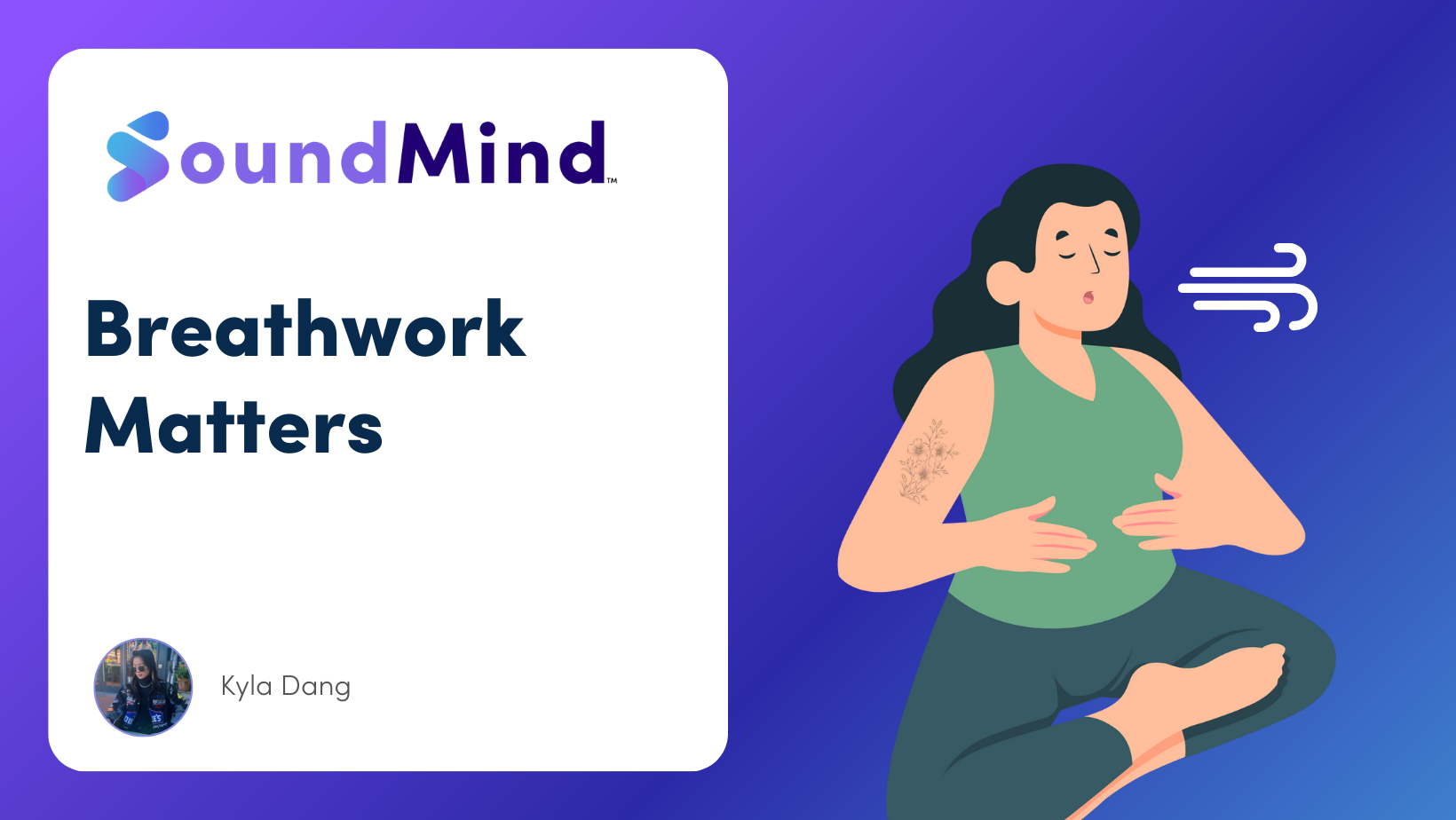Posted on September 5, 2023 by Kyla Dang


“Just breathe”. How many times have we heard that phrase? How many of us roll our eyes at it? What’s so important about the breath?
Breathworks is an ancient technique originating from a variety of practices, from Buddhism and Taoism to Yogic practices. Cultures from across thousands of years and various different continents had breathwork practices. Even language conveyed the importance of breath—for example, the Chinese word for breath and air we breathe is “chi”, which also means “universal and cosmic energy of life”. In English, the word ‘spirit’ comes from the Latin ‘spiritus’, meaning “a breath”.
Many of these cultures often worked with the breath to encourage a non-ordinary state of consciousness, facilitating healing, transformation, introspection, self-discovery, and relaxation, among many more.
How can breathwork be relevant to you today? It appears that Americans are at an all time high level of stress. 41% of adults have reported being increasingly stressed due to the COVID-19 pandemic, along with citing inflation (65%) and the economy (76% for adults aged 26-43).
Recently there has been a re-emergence of breathwork in Western cultures, pioneered in the 1970s by Leonard Orr (Rebirthing Breathwork movement) and Stanislav Grof (Holotropic Breathwork). In the 50+ years since then, there has been a development of many new techniques that incorporate breathwork for the modern practitioner. Many of these focus on reducing stress and finding ways to re-center the self, even in times of crisis.
Below are some practices that are applicable for easy, daily stress reduction:
“Diaphragmatic Breathing”: This is the most basic of breathwork exercises, which focuses on the diaphragm and the lungs. It’s very simple and works great in the morning when you wake up, making a difference in waking up mindfully rather than stressfully. There are four steps:
It’s been shown that this technique can strengthen the diaphragm, reduce blood pressure, improve relaxation, and center your mind, among other benefits.
“Box Breathing”: There are many different counting patterns that you can implement, but a common one is ‘4444’—meaning inhale for 4 seconds, hold for 4 after inhale, exhale for 4, and hold for 4 after exhale. This one in particular is suited for stress; studies have shown that regulating your breath has a calming effect and can get you out of that ‘fight or flight’ mode.
“Buteyko Breathing Technique (BBT)”: this one is especially good for those with asthma (prone to hyperventilation) and panic attacks. It’s similar to diaphragmatic breathing since it focuses on the diaphragm, but has different steps to achieve diaphragm activation. There are four steps:
It’s been shown that this technique may reduce asthma symptoms and help lessen anxiety symptoms. It was originally developed to combat the effects of poor breathing habits—namely, heart disease, high blood pressure, anxiety, and depression.
Breathwork can be done at any time—as long as you have 10 minutes a day, you can practice! Pairing theta binaural beats in the 4-8 hertz range on the SoundMind app can help you get into a meditative and relaxed mood if it’s difficult, or can help you maintain your peace of mind during practice. Try out breathwork with a binaural beat today, and let yourself be carried away into the calming movement of air through your body!
Have you tried out our research-backed binaural beats on the SoundMind app? Download for free here!
Thank you for reading “Piece of Mind”! If you liked this post, share it with a friend and help us increase our positive impact on Gen-Z mental health 🙂
Subscribe to receive blog updates!